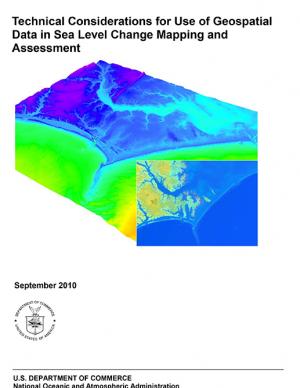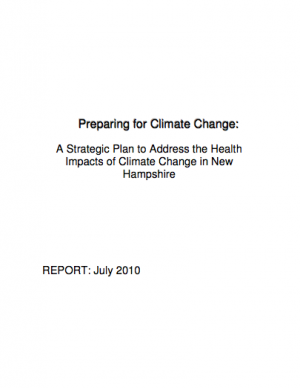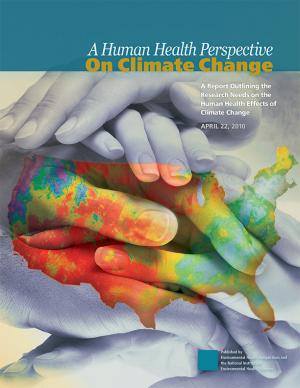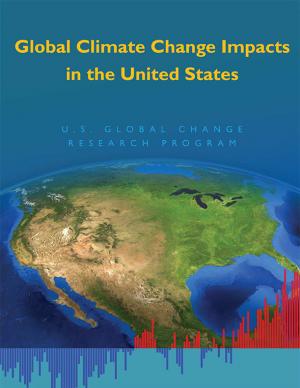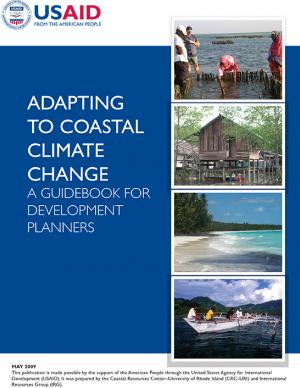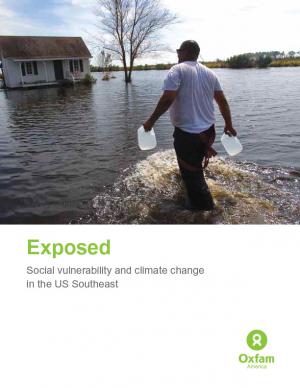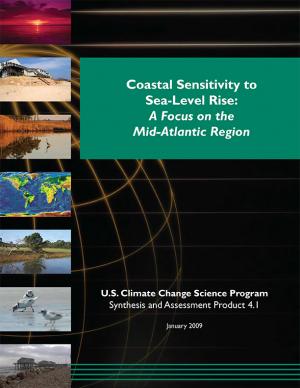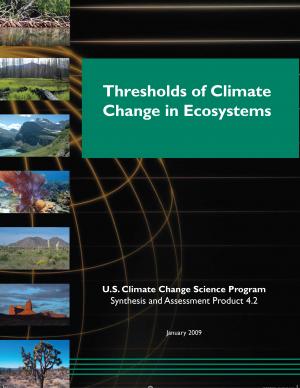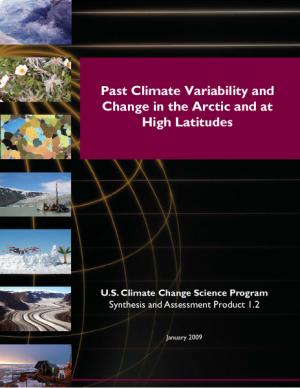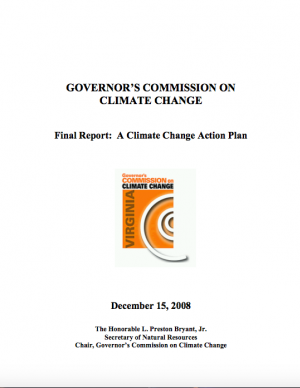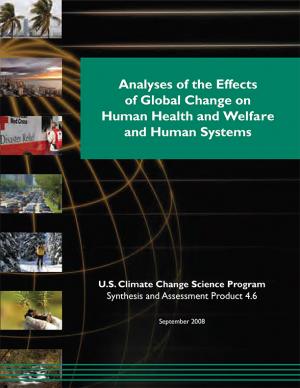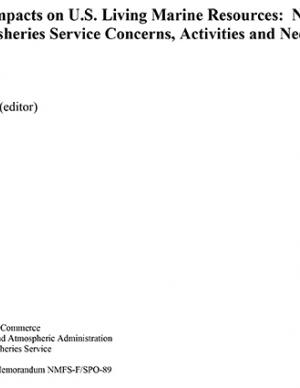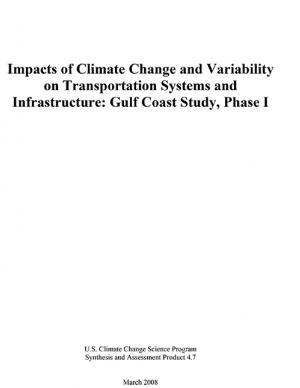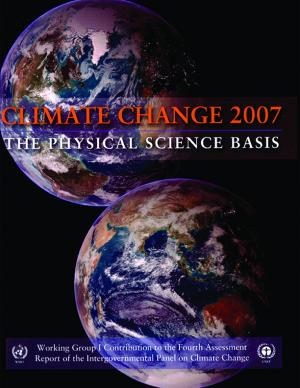Access a range of climate-related reports issued by government agencies and scientific organizations. Browse the reports listed below, or filter by scope, content, or focus in the boxes above. To expand your results, click the Clear Filters link.
This guide was designed to help U.S. state and territorial coastal managers develop and implement adaptation plans to reduce the impacts and consequences of climate change and climate variability. It was written in response to a request from state coastal managers for guidance from NOAA on adaptation planning in the coastal zone.
Guidance for federal and state agencies and coastal planners for conducting sea level change assessments and mapping. The report is intended to provide technical guidance to agencies, practitioners, and coastal decision-makers seeking to use and/or collect geospatial data to assist with sea level change assessments and mapping products.
This Needs Assessment report represents the initial step in creating a Strategic Plan for the state of New Hampshire to prepare for and address the public health impacts of climate change.
This report quantifies the outcomes of different stabilization targets for greenhouse gas concentrations using analyses and information drawn from the scientific literature. Although it does not recommend or justify any particular stabilization target, it does provide important scientific insights about the relationships among emissions, greenhouse gas concentrations, temperatures, and impacts. The report emphasizes the importance of 21st century choices regarding long-term climate stabilization, and is a useful resource for scientists, educators, and policy makers, among others.
This report, by a federal working group led by the National Institute of Environmental Health Sciences, highlights 11 key categories of diseases and other health consequences that are occurring or will occur due to climate change. The report provides a starting point for coordination of federal research to better understand climate’s impact on human health. The recommendations of the working group include research to identify who will be most vulnerable, and what efforts will be most beneficial.
The Alaska Climate Change Sub-Cabinet was established on September 14, 2007, to advise the state's governor on creating a comprehensive Alaska Climate Change Strategy. This document contains the recommendations of the Adaptation Advisory Group, which was charged with evaluating and developing options to adapt to climate change. The report also includes background about projected climate impacts on Alaska.
The sixth edition of a report card to the American public on the biological health of U.S. living marine resources. The report includes updates on major fisheries and marine resources, as well as feature articles on fisheries science, coral, and cooperative and proactive approaches to the Endangered Species Act.
This report is the Second National Climate Assessment, summarizing the science and impacts of climate change on the United States. The report discusses climate-related impacts for various societal and environmental sectors and regions across the nation. It is an authoritative scientific report written in plain language, with the goal of better informing public and private decision making at all levels.
This report provides a detailed treatment of climate concerns in coastal areas, and proposes an approach for assessing vulnerability to climate change and climate variability, developing and implementing adaptation options, and integrating options into programs, development plans, and projects at the national and local levels. This is known as a vulnerability and adaptation, or V&A, approach.
King County in Washington State has established a comprehensive program to prepare for climate change, and many of the tools and strategies that King County has employed can be applied in other communities. This memorandum from the King County Office of Strategic Planning and Performance Management, published by the American Planning Association, describes strategies developed in King County to direct local government efforts to address climate change.
Historically, studies about climate hazards and social vulnerability have been conducted in separate silos. The Social Vulnerability Index (SoVI) is the first study of its kind to examine both the potential impact of natural hazards and which populations are most likely to be negatively affected. This research, commissioned by Oxfam America, includes a series of layered maps that depict social and climate change-related hazard vulnerability. The maps assist in identifying hotspots in the U.S. Southeast, which are at significant risk in the face of four particular climate change-related hazards: drought, flooding, hurricane force winds, and sea level rise. The specific region of focus is the 13-state region of the US Southeast: Alabama, Arkansas, Florida, Georgia, Kentucky, Louisiana, Maryland, Mississippi, North Carolina, South Carolina, Tennessee, Texas, and Virginia. Roughly 80 percent of all U.S. counties that experience persistent poverty (defined as a county in which at least 20 percent of the population experiences poverty for three decades or more) lie in this region.
This report is designed to help Oregon's local decision makers prepare adaptation plans and state agencies to coordinate their infrastructure plans with local adaptation initiatives.
This Synthesis and Assessment Product (SAP), developed as part of the U.S. Climate Change Science Program, examines potential effects of sea level rise from climate change during the twenty-first century, with a focus on the mid-Atlantic coast of the United States. Using scientific literature and policy-related documents, the SAP describes the physical environments; potential changes to coastal environments, wetlands, and vulnerable species; societal impacts and implications of sea level rise; decisions that may be sensitive to sea level rise; opportunities for adaptation; and institutional barriers to adaptation. This SAP discusses ways natural and social science research can improve understanding and prediction of potential impacts to aid planning and decision making.
An assessment of the potential for abrupt state changes or regime shifts in ecosystems in response to climate change. Better understanding of sudden changes to ecosystems, and the goods and services they provide, is extremely important if natural resource managers are to succeed in developing adaptation strategies.
Average temperatures in the Arctic have increased at almost twice the rate of the planet as a whole. Such temperature changes have been accompanied by shrinking sea ice, melting ice and permafrost on land, and widespread impacts to land and ocean ecosystems. This Synthesis and Assessment Product, developed as part of the U.S. Climate Change Science Program, offers recommendations for future research in this area.
This report presents the projected impacts of climate change on the Rogue River Basin of southwest Oregon.
The Action Plan describes climate effects on the built environment, natural systems, and human health in Virginia and sets forth a comprehensive set of recommendations for reducing greenhouse gases.
This Synthesis and Assessment Product from the U.S. Climate Change Science Program reviews impacts of global climate change on three broad dimensions of the human condition: human health, human settlements, and human welfare. This report examines opportunities for adaptation and associated recommendations for addressing data gaps and near- and long-term research goals.
A report on climate impacts on coastal and marine ecosystems as it relates to the National Marine Fisheries Service's work.
Ted Kulongoski, Governor of Oregon from 2003–2011, selected the Climate Change Integration Group (CCIG) to develop a framework for making informed decisions to minimize the more extreme impacts of climate change. Kulongoski wanted the CCIG to create a strategy for Oregon to apply the measures from the 2004 Oregon Strategy for Greenhouse Gas Reductions. In this report, the CCIG proposes that Oregon takes steps toward developing a framework that will assist individuals, businesses, and governments to incorporate climate change into their planning processes.
There is robust consensus that human-induced climate change is occurring. This Synthesis and Assessment Product from the U.S. Climate Change Research Program is an assessment of the effects of climate change on U.S. land resources, water resources, agriculture, and biodiversity.
In 2007, Nevada's Governor Jim Gibbons signed an executive order that created the Nevada Climate Change Advisory Committee. The order directed the committee to propose recommendations to further reduce greenhouse gas emissions in Nevada, and tasked it with writing this three-part report highlighting the potential impacts, accomplishments, and recommendations to address the issue of climate change in Nevada.
As global temperatures increase, sea levels rise, and weather patterns change, the stewards of our nation's infrastructure are challenged to consider how these changes may affect the country's roads, airports, rail, transit systems, and ports. This study focuses on potential impacts of climate change on human infrastructure in the U.S. Gulf Coast region.
This report, a Synthesis and Assessment Product from the U.S. Climate Change Science Program, summarizes the effects of climate change on energy production and use in the United States. It also identifies where research could reduce uncertainties about vulnerabilities, possible effects, and strategies to reduce negative effects and increase adaptive capacity.
This report summarizes scientific understandings of climate change and its potential impact on Utah and the western United States, created by a "blue ribbon" advisory council appointed by Utah Governor Huntsman. The report makes around 70 recommendations for fighting global warming, including developing significant amounts of renewable energy with incentives and tax credits, encouraging the capture and disposal of carbon dioxide, improving efficiency at power plants, implementing an aggressive mass transit strategy, and preserving open space and agricultural land and protecting forests. The report, however, does not include specific policy recommendations or rules to implement action.
This comprehensive scientific assessment of past, present, and future global climate change represents the Intergovernmental Panel on Climate Change (IPCC) Working Group I's contribution to the IPCC Fourth Assessment report (AR4). The assessment confirms that the scientific understanding of the climate system and its sensitivity to greenhouse gas emissions is richer and deeper than ever before. The chapters forming the bulk of this report describe scientists' assessment of the then state-of-knowledge in their respective fields.
This report evaluates and synthesizes knowledge on climate variability, climate change, and increased ultraviolet radiation and their consequences for the Arctic region.
This Executive Order requires that King County, Washington, municipal departments employ coordinated strategies of land use to mitigate and adapt to global warming.
This document identifies goals and actions to conserve and restore Oregon’s species, habitats, and ecosystems. The report addresses climate change as a key conservation issue, and many of the recommendations provided consider adaptation measures to address species and habitat conservation needs. The 10-year revision of the Strategy and its Nearshore Component is currently under review by the U.S. Fish and Wildlife Service and will be posted at the provided URL once approved.


